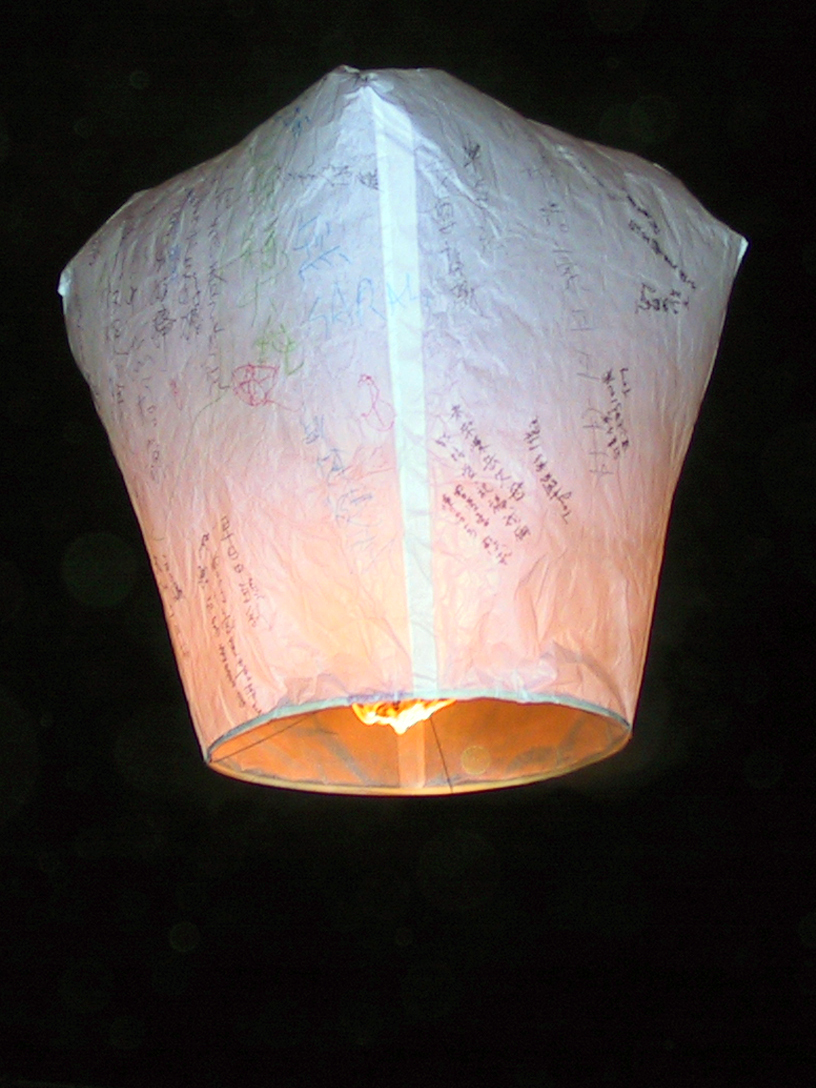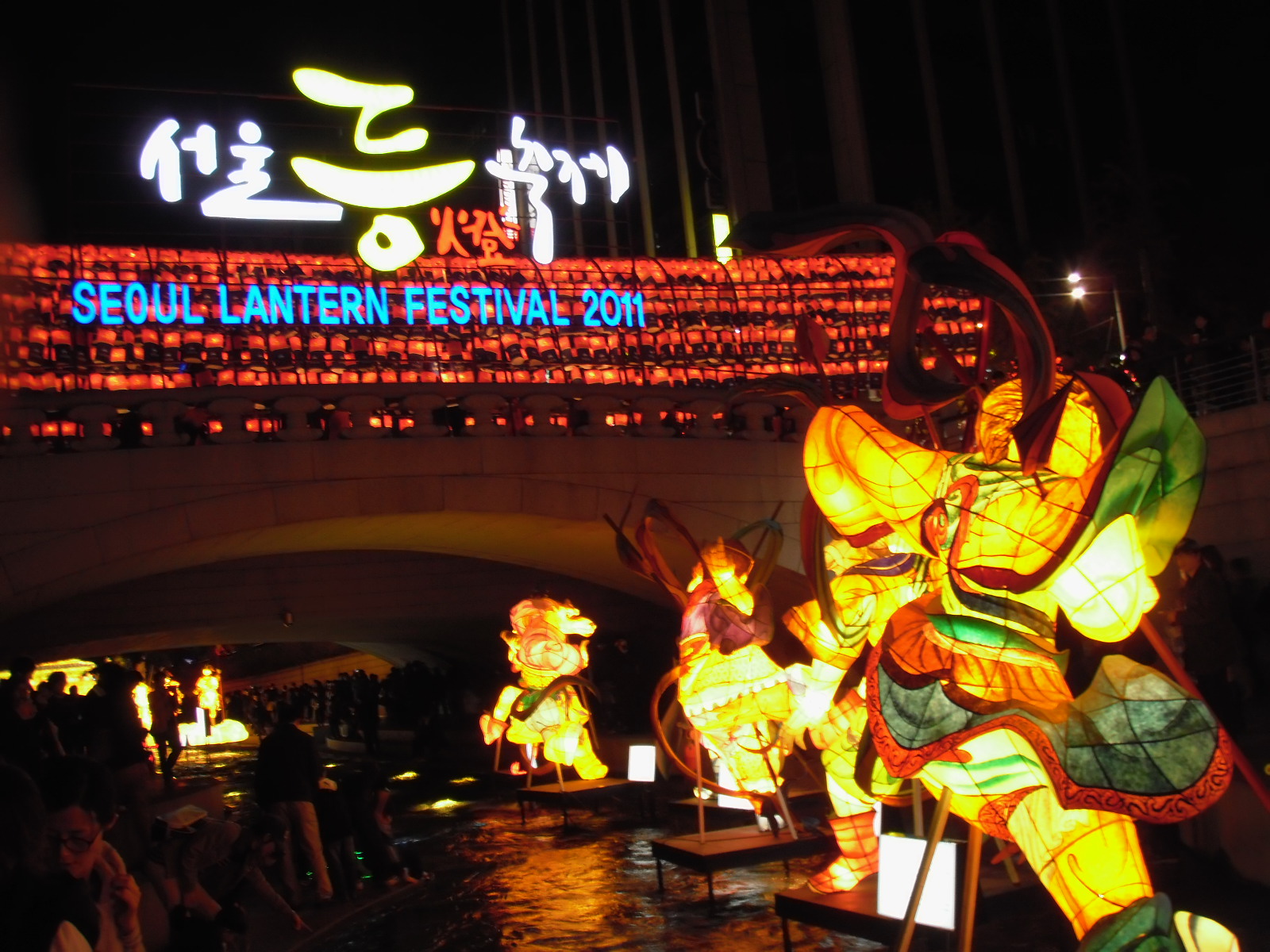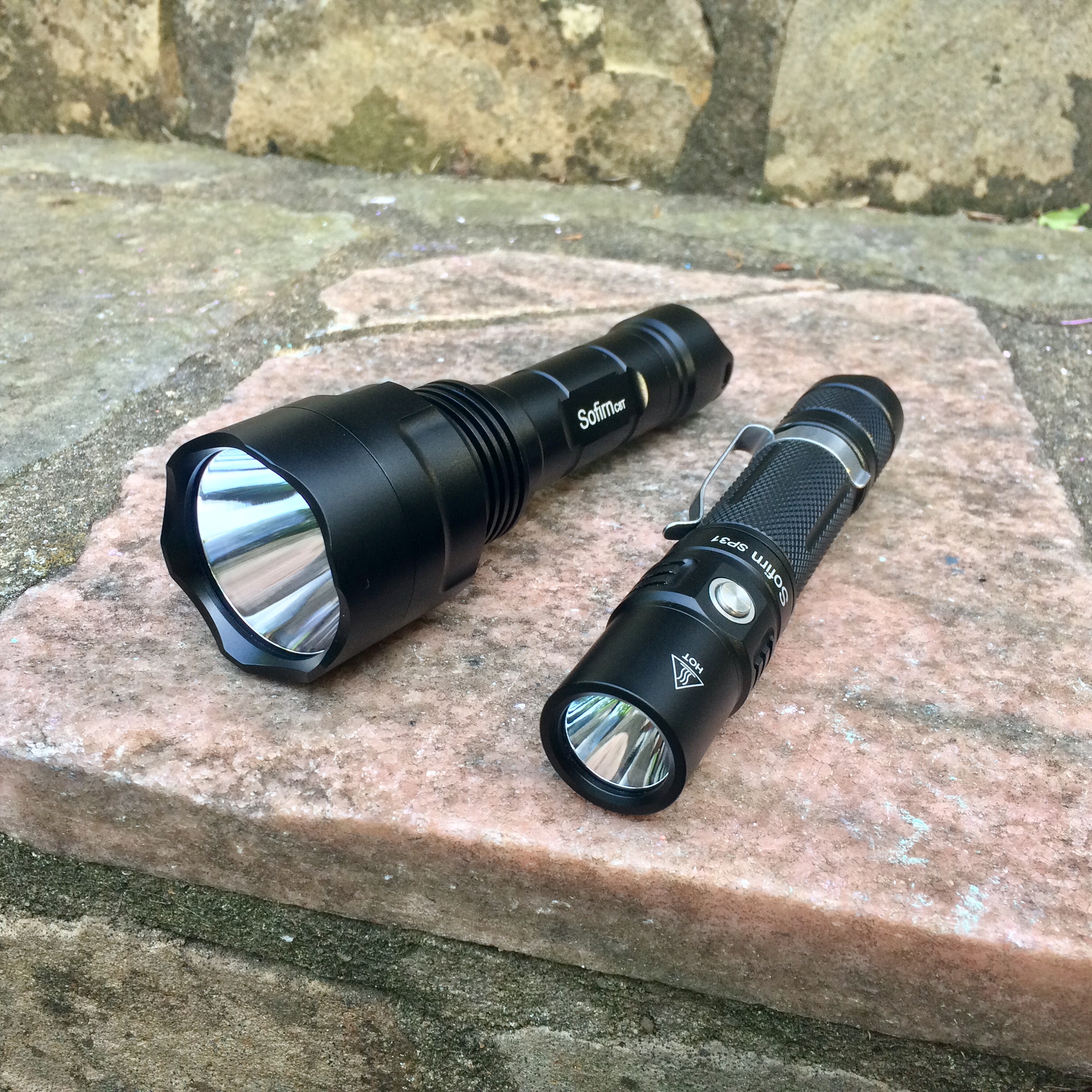|
Lanterns
A lantern is an often portable source of lighting, typically featuring a protective enclosure for the light sourcehistorically usually a candle or a wick in oil, and often a battery-powered light in modern timesto make it easier to carry and hang up, and make it more reliable outdoors or in drafty interiors. Lanterns may also be used for signaling, as torches, or as general light-sources outdoors. Use The lantern enclosure was primarily used to prevent a burning candle or wick being extinguished from wind, rain or other causes. Some antique lanterns have only a metal grid, indicating their function was to protect the candle or wick during transportation and avoid the excess heat from the top to avoid unexpected fires. Another important function was to reduce the risk of fire should a spark leap from the flame or the light be dropped. This was especially important below deck on ships: a fire on a wooden ship was a major catastrophe. Use of unguarded lights was taken so seriou ... [...More Info...] [...Related Items...] OR: [Wikipedia] [Google] [Baidu] |
Kongming Lantern
A sky lantern (), also known as Kǒngmíng lantern (), or Chinese lantern, is a small hot air balloon made of paper, with an opening at the bottom where a small fire is suspended. In Asia and elsewhere around the world, sky lanterns have been traditionally made for centuries, to be launched for play or as part of long-established festivities. The name ''sky lantern'' is a translation of the Standard Chinese, Chinese name but they have also been referred to as ''sky candles'' or ''fire balloons''. In Thai, they are known as ''khom loi''. Several fires have been attributed to sky lanterns, with at least one 21st-century death caused. Sky lanterns have been made illegal in several countries. Many areas of Asia do not permit sky lanterns because of widespread fire hazards as well as danger to livestock. Construction The general design is a thin paper shell, which may be from about 30 centimetre, cm to a couple of metres across, with an opening at the bottom. The opening is ... [...More Info...] [...Related Items...] OR: [Wikipedia] [Google] [Baidu] |
Paper Lantern
A paper lantern is a lantern made of thin, brightly colored paper. Paper lanterns come in various shapes and sizes, as well as various methods of construction. In their simplest form, they are simply a paper bag with a candle placed inside, although more complicated lanterns consist of a collapsible bamboo or metal frame of hoops covered with tough paper. Origin Paper lanterns are likely derived from earlier lanterns that used other types of translucent material like silk, horn, or animal skin. The material covering was used to prevent the flame in the lantern from being extinguished by wind, while still retaining its use as a light source. Papermaking technology originated from China from at least AD 105 during the Eastern Han Dynasty, but it is unknown exactly when paper became used for lanterns. Poems about paper lanterns start to appear in Chinese history at around the 6th century. Paper lanterns were common by the Tang Dynasty (AD 690–705), and it was during this period ... [...More Info...] [...Related Items...] OR: [Wikipedia] [Google] [Baidu] |
Lantern Festival
The Lantern Festival ( zh, t=元宵節, s=元宵节, first=t, hp=Yuánxiāo jié), also called Shangyuan Festival ( zh, t=上元節, s=上元节, first=t, hp=Shàngyuán jié), is a Chinese traditional festival celebrated on the fifteenth day of the first month in the lunisolar Chinese calendar, during the full moon. Usually falling in February or early March on the Gregorian calendar, it marks the final day of the traditional Chinese New Year celebrations. As early as the Western Han Dynasty (206 BC–AD 25), it had become a festival with great significance. During the Lantern Festival, children go out at night carrying paper lanterns and solve riddles on the lanterns (). In ancient times, the lanterns were fairly simple, and only the emperor and noblemen had large ornate ones. In modern times, lanterns have been embellished with many complex designs. For example, lanterns are now often made in the shape of animals. The lanterns can symbolize the people letting go of their ... [...More Info...] [...Related Items...] OR: [Wikipedia] [Google] [Baidu] |
Ghost Festival
The Ghost Festival, also known as the Zhongyuan Festival (traditional Chinese: 中元節; simplified Chinese: ) in Taoism and Yulanpen Festival () in Buddhism, is a traditional Taoist and Buddhist festival held in certain East Asian countries. According to the Chinese calendar (a lunisolar calendar), the Ghost Festival is on the 15th night of the seventh month (14th in parts of southern China).Chow 2015 In Chinese culture, the fifteenth day of the seventh month in the lunar calendar is called Ghost Day and the seventh month in general is regarded as the Ghost Month (), in which ghosts and spirits, including those of deceased ancestors, come out from the lower realm. Distinct from both the Qingming Festival (or Tomb Sweeping Day, in spring) and Double Ninth Festival (in autumn) in which living descendants pay homage to their deceased ancestors, during Ghost Festival, the deceased are believed to visit the living. On the fifteenth day the realms of Heaven and Hell and the r ... [...More Info...] [...Related Items...] OR: [Wikipedia] [Google] [Baidu] |
Seoul Lantern Festival
The Seoul Lantern Festival is a festival held every November in Seoul in South Korea when hundreds of lanterns decorate the public recreation space of Cheonggyecheon. Introduction The Seoul Lantern Festival started in 2009. The two-week festival starts on the Friday of the first week in November and covers downtown Seoul in sparkling lights, illuminating the city at night during the early winter. Visitors can encounter various types of lanterns from Cheonggye Plaza to Supyo Bridge (1.2 kilometers). Program Seoul Lantern Festival offers different concepts of festival every year. 2009 The first Seoul Lantern Festival celebrated the 'Visit Korea Year 2010 to 2012' for 5 days. The festival had four themes that were related to 'ryu' Korean. * Theme 1: Gyoryu zone (Exchange zone) * Theme 2: Wonryu zone (Headwaters zone) * Theme 3: Hanryu zone (Korean wave zone) * Theme 4: Ilryu zone (First-class zone) 2010 The second Seoul Lantern Festival drew 2.3 million visitor ... [...More Info...] [...Related Items...] OR: [Wikipedia] [Google] [Baidu] |
Flashlight
A flashlight (American English, US, Canadian English, Canada) or torch (British English, UK, Australian English, Australia) is a portable hand-held electric lamp. Formerly, the light source typically was a miniature incandescent light bulb, but these have been displaced by light-emitting diodes (LEDs) since the mid-2000s. A typical flashlight consists of the light source mounted in a reflector, a transparent cover (sometimes combined with a Lens (optics), lens) to protect the light source and reflector, a battery (electricity), battery, and a switch, all enclosed in a case. The invention of the dry cell and miniature incandescent electric lamps made the first battery-powered flashlights possible around 1899. Today, flashlights use mostly light-emitting diodes and run on Disposable battery, disposable or rechargeable battery, rechargeable batteries. Some are powered by the user turning a Crank (mechanism), crank, shaking the lamp, or squeezing it. Some have solar panels to rech ... [...More Info...] [...Related Items...] OR: [Wikipedia] [Google] [Baidu] |
Oil Lamp
An oil lamp is a lamp used to produce light continuously for a period of time using an oil-based fuel source. The use of oil lamps began thousands of years ago and continues to this day, although their use is less common in modern times. They work in the same way as a candle but with fuel that is liquid at room temperature, so that a container for the oil is required. A textile wick drops down into the oil, and is lit at the end, burning the oil as it is drawn up the wick. Oil lamps are a form of lighting, and were used as an alternative to candles before the use of electric lights. Starting in 1780, the Argand lamp quickly replaced other oil lamps still in their basic ancient form. These in turn were replaced by the kerosene lamp in about 1850. In small towns and rural areas the latter continued in use well into the 20th century, until such areas were finally electrified and light bulbs could be used. Sources of fuel for oil lamps include a wide variety of plants such as ... [...More Info...] [...Related Items...] OR: [Wikipedia] [Google] [Baidu] |
Street Light
A street light, light pole, lamp pole, lamppost, street lamp, light standard, or lamp standard is a raised source of light on the edge of a road or path. Similar lights may be found on a railway platform. When urban electric power distribution became ubiquitous in developed countries in the 20th century, lights for urban streets followed, or sometimes led. Many lamps have light-sensitive photocells that activate the lamp automatically when needed, at times when there is little-to-no ambient light, such as at dusk, dawn, or at the onset of dark weather conditions. This function in older lighting systems could be performed with the aid of a solar dial. Many street light systems are being connected underground instead of wiring from one utility post to another. Street lights are an important source of public security lighting intended to reduce crime. History Preindustrial era Early lamps were used by Greek and Roman civilizations, where light primarily served the purpose ... [...More Info...] [...Related Items...] OR: [Wikipedia] [Google] [Baidu] |
Lighthouse
A lighthouse is a tower, building, or other type of physical structure designed to emit light from a system of lamps and lenses and to serve as a beacon for navigational aid, for maritime pilots at sea or on inland waterways. Lighthouses mark dangerous coastlines, hazardous shoals, reefs, rocks, and safe entries to harbors; they also assist in aerial navigation. Once widely used, the number of operational lighthouses has declined due to the expense of maintenance and has become uneconomical since the advent of much cheaper, more sophisticated and effective electronic navigational systems. History Ancient lighthouses Before the development of clearly defined ports, mariners were guided by fires built on hilltops. Since elevating the fire would improve the visibility, placing the fire on a platform became a practice that led to the development of the lighthouse. In antiquity, the lighthouse functioned more as an entrance marker to ports than as a warning signal for reef ... [...More Info...] [...Related Items...] OR: [Wikipedia] [Google] [Baidu] |
Holy Fire
In Orthodox Christian belief, the Holy Fire ( el, Ἃγιον Φῶς, "Holy Light") is a proposed miracle that occurs every year at the Church of the Holy Sepulchre in Jerusalem on Great Saturday, the day before Orthodox Easter. However, the authenticity of the miracle has long been disputed. Description from within the Orthodox faith Orthodox tradition holds that the Holy Fire happens annually on the day preceding Orthodox Pascha ( Orthodox Easter). During this time, blue light is said to emit within Jesus' tomb, rising from the marble slab covering the stone bed believed to be that upon which Jesus' body is to have been placed for burial. The marble slab is now in the Church of the Holy Sepulchre in the Old City of Jerusalem. The light is believed to form a column of fire, from which candles are lit. This fire is then used to light the candles of the clergy and pilgrims in attendance. The fire is also said to spontaneously light other lamps and candles around the church. Pi ... [...More Info...] [...Related Items...] OR: [Wikipedia] [Google] [Baidu] |
Lamp (electrical Component)
An electric light, lamp, or light bulb is an electrical component that produces light. It is the most common form of artificial lighting. Lamps usually have a base made of ceramic, metal, glass, or plastic, which secures the lamp in the socket of a light fixture, which is often called a "lamp" as well. The electrical connection to the socket may be made with a screw-thread base, two metal pins, two metal caps or a bayonet cap. The three main categories of electric lights are incandescent lamps, which produce light by a filament heated white-hot by electric current, gas-discharge lamps, which produce light by means of an electric arc through a gas, such as fluorescent lamps, and LED lamps, which produce light by a flow of electrons across a band gap in a semiconductor. Before electric lighting became common in the early 20th century, people used candles, gas lights, oil lamps, and fires. Vasily Vladimirovich Petrov developed the first persistent electric arc in 1802, an ... [...More Info...] [...Related Items...] OR: [Wikipedia] [Google] [Baidu] |
Landscape Lighting
Landscape lighting or garden lighting refers to the use of outdoor illumination of private gardens and public landscapes; for the enhancement and purposes of safety, nighttime aesthetics, accessibility, security, recreation and sports, and social and event uses. Light pollution exacerbated by excessive, misdirected or obtrusive use of light, but even carefully used light fundamentally alters natural conditions. As a major side-effect of urbanization, it is blamed for compromising health, disrupting ecosystems and spoiling aesthetic environments. History The public landscape and gardens have been illuminated for as long as interior structures have – for beauty, security, circulation, and social occasions; since ancient times by firelight from wood, candles, and animal-plant oil fells in torches, sconces and lanterns. Since the 17th century's introductions of new interior illumination fuels, the technology has then been used outdoors and in gardens. As systems were d ... [...More Info...] [...Related Items...] OR: [Wikipedia] [Google] [Baidu] |









.jpg)

